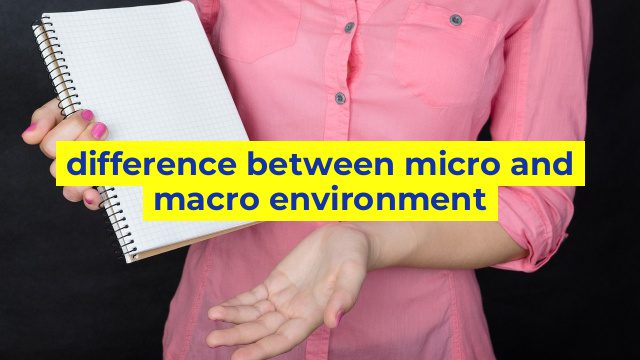The Difference Between Micro and Macro Environment
As an entrepreneur or business venture, there are various environmental factors that play significant roles in your business operations both directly and indirectly. Environmental factors affect your business in two ways, the micro and macro environment.
What is Micro Environment?
A micro environment is your business’s internal environment, which affects its day-to-day operations directly. Typically, it comprises the company’s internal elements, including the employees, management, shareholders, suppliers, and customers, amongst others. Micro environment factors are specific to the organization and affect its operations directly. Major examples include:
- Employees and Management
- Suppliers
- Customers
- Company’s shareholders
- Media outlets.
What is Macro Environment?
Macro environment, on the other hand, includes all external factors that affect the business environment and indirectly affect the business operations. It could be affected by the economic, socio-cultural, technological, environmental, and political factors. These factors are beyond the organization’s control and could impact the business positively or negatively.
Major examples include:
- The economy
- The government policies and regulations
- The demographic trends
- The technological factors that include available technology in the market
- The environmental factors that include the weather patterns and natural disasters, amongst others.
How Micro and Macro Environment is interdependent.
Despite being different, micro and macro environment factors are interdependent. The macro environment influences the company’s micro-environmental factors while the micro forces also impact the macro environment. The impact of this dynamic interdependence of two factors is visible in the quality and competitiveness of the company’s products and services.
To understand the interdependency, for instance, the purchasing power of the customer that is a micro factor is a significant contributor to the economy’s stability, which is a macro-environmental factor.
Why Knowing the Difference Is Important
Understanding the difference between micro and macro environment factors is vital for businesses and entrepreneurs to devise strategies to optimize operations and balance the two forces. Identifying opportunities and mitigating risks becomes easier when they know which factors they have control over and which they do not.
In conclusion, both micro and macro environmental factors impact your business directly and indirectly in different ways. Understanding the two and the interdependency between them can help guide organizations in strategizing better, optimizing operations, and making risk-management decisions.
Table difference between micro and macro environment
| Aspect | Micro Environment | Macro Environment |
|---|---|---|
| Definition | The environment that directly affects an organization, including its suppliers, customers, competitors, and other stakeholders. | The broader societal forces that affect an organization, including economic, political, technological, and cultural factors. |
| Scope | Internal and immediate external factors that affect the organization. | External factors that are beyond the immediate control of the organization. |
| Impact | The micro environment has a direct and immediate impact on the organization and its operations. | The macro environment has a broader impact on the organization and may not have an immediate effect. |
| Elements | Suppliers, customers, competitors, stakeholders, and intermediaries. | Economic, technological, political, legal/regulatory, and sociocultural factors. |
| Control | The organization has more control over the micro environment as it can establish and manage relationships with stakeholders. | The organization has less control over the macro environment as it is affected by external factors beyond its control. |


